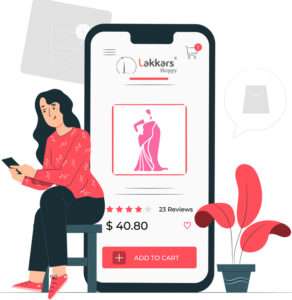The Woman who Brought her Trafficker to Justice
Susan had been on Italian soil for exactly three days when, on 23 July 2015, she was taken with dozens of other new arrivals to a noisy, overcrowded detention centre in Rome, and told she would shortly be deported back to Nigeria. Some women shouted in anger, others started to cry. Susan remained silent. She could not go back.

The previous spring, Susan had been persuaded to make the journey to Italy by a Nigerian woman called Ivie, who she met in her home village in the southern Nigerian state of Edo. The woman had offered to pay for Susan’s journey to Europe and promised she would get decent, paid work when she arrived. Susan underwent a traditional juju oath-taking ceremony, in front of a priest, in which she swore to pay the woman back and to be loyal to her. Now, here in Italy, Susan knew that if she did not repay the debt, there would be terrible consequences.
A lawyer from a voluntary organisation helped Susan make an asylum application that would allow her to remain in the country, and after a few more weeks in detention, she was transferred to a migrant reception centre in central Italy to wait for her case to be processed. Soon after, Ivie picked her up and brought her to an apartment in Prato, outside Florence. Four other young Nigerian women were already living there. One of them handed Susan a pair of high-heeled shoes and a short skirt. “Let’s go,” she said. “We have to work.”

Susan thought it must be a joke. She had been promised work as a babysitter or a supermarket cashier. “They didn’t tell me I would come here to be a prostitute,” Susan told me. But the women around her were not laughing. When she protested, Ivie reminded her that she had paid for her journey, and of how much money she owed. If she didn’t pay, or if she spoke about it to anyone, her mother and brothers back home would be in danger. “I was crying,” Susan told me. “The other girls said: ‘You’ll get used to it’. I said: ‘I’ll never get used to it.’”
There were no days off. Susan was never alone, but she felt isolated. Ivie had created a hierarchy, making it hard for the girls to bond. Hillary, another young woman from Edo state, had been given the role of collecting the money at the end of the night and checking on the girls. Susan’s survival strategy was to avoid the men who came looking for sex – to work as little as possible. In January she made only €420. Frustrated by Susan’s poor earnings, Ivie hit her so hard that Susan was afraid she was going to lose the sight in one eye.
One day at the end of January, five weeks after Susan had arrived in Prato, Susan was moved to another town in the north of Italy. Ivie controlled her from afar, calling her often, and her new madam pressured her for money. “I couldn’t continue like that. Every night in the rain, every day,” Susan said. The hardest thing to bear was that her sacrifice was not even helping her family in Nigeria. “They didn’t let me send any money home.”

Since 2015, about 21,000 Nigerian women and girls have arrived on Italian shores. In 2017, the UN’s International Organization for Migration reported that 80% were potential victims of sex trafficking, but numbers are hard to confirm. Italy has been the stage for a cruel cycle of exploitation in which survivors of trafficking, after years of forced prostitution, have become traffickers themselves, the so-called “madams”. Some of them bring new women to Italy in order to finish paying off their debt to their traffickers and find a way out of the streets, and others have been exploited for so long that they see the exploitation of others as their only option for a better life.
Victims are generally afraid to come forward, and few traffickers have been identified. The UN Convention against Transnational Organized Crime, a key tool in international law to prosecute traffickers and protect survivors, states that survivors of trafficking should be offered temporary or permanent residence. Italy was a major proponent of the convention, which was signed in Palermo in December 2000. But since then, as more migrants have arrived, the political landscape has changed.

After 2009, when Italian law made it a criminal offence to enter and stay in the country without a visa, the fear of being arrested forced undocumented migrants to go underground. Victims of trafficking are rarely identified during immigration controls. Even if they are identified as possible victims, under questioning, many women struggle to recall details of their journey. “They don’t remember the name of the city they were transferred to, so they are not considered believable,” Carla Quinto, a lawyer working with the anti-trafficking organisation Be Free, told me.
If they are believed, gathering evidence for the three elements constituting the crime of human trafficking – recruitment, transfer and exploitation – presents further challenges: the difficulty of coordinating international investigations with police from the countries of origin, the lack of sympathy or support from many police officers and prosecutors in Italy, and the fact that Nigerian criminal groups behind human trafficking sometimes collaborate with the local mafia for protection. Investigations are complex and often slow, while traffickers move quickly, relocate their victims frequently and change their phone numbers multiple times. “Criminal organisations are always ahead of us,” Quinto said.

But in February 2016, a magistrate specialising in organised crime, Angela Pietroiusti, launched an investigation that would cut through layers of prejudice and bring the expertise of anti-mafia units to bear on sex trafficking. Over the course of a year, the investigation uncovered a sophisticated network of traffickers operating between Nigeria, Libya, Italy, France, Germany and the UK, which recruited young women and girls and brought them to Europe.
Key to this investigation was the detailed notes and photographs that one woman, outraged at being forced into prostitution, had amassed in secret. That woman was Susan.

Magazine launched for helping women for success. Lakkars has always served and worked efficiently towards women empowerment, we have blossomed into America’s most-read fashion magazine.


